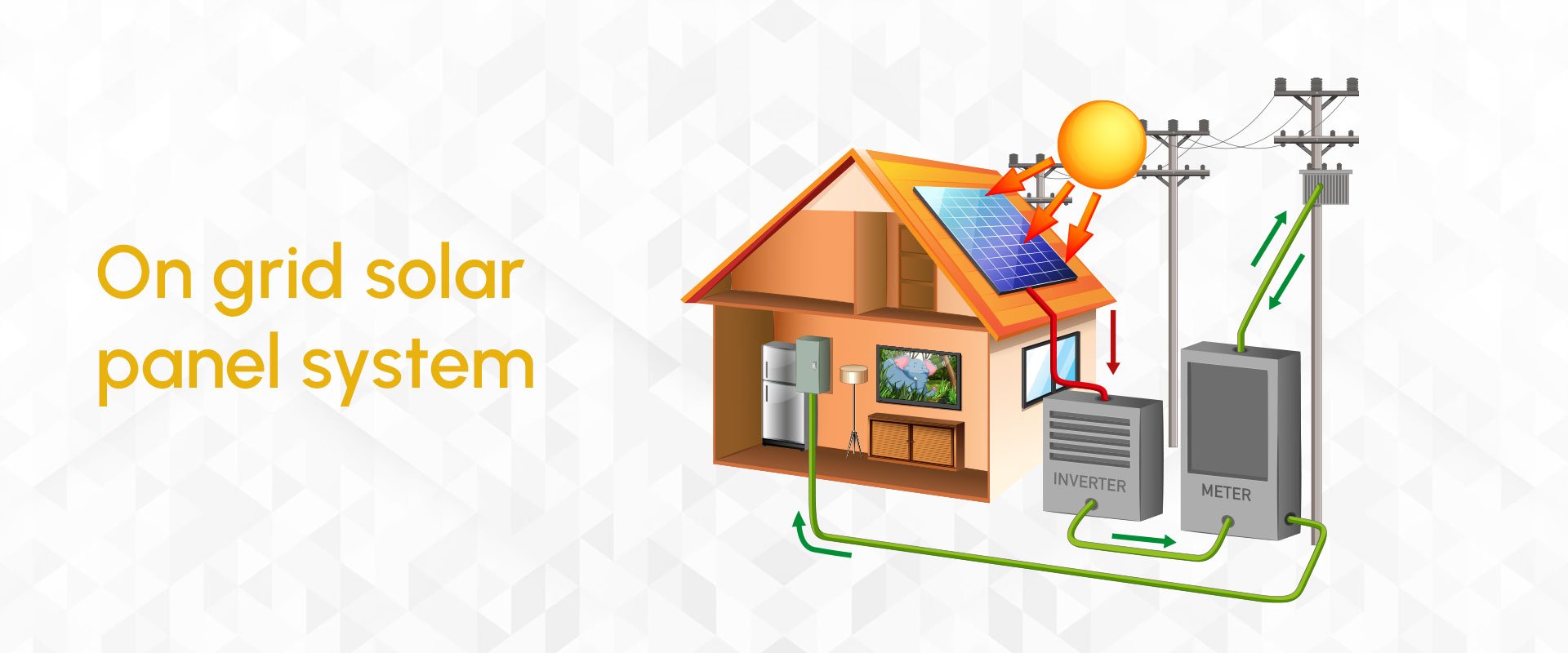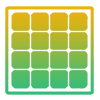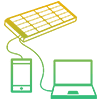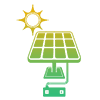- Mail Us : omsolar01@gmail.com, rituraj@omsolar.in


ON Grid Solar Rooftop System
An on-grid solar system, also known as a grid-tied solar system, is a popular choice for solar panel installation in Lucknow, functions alongside the grid. Accordingly, any excess or shortage of energy can be fed into the grid through net metering. Since they may receive credit for any excess power their system generates and cut their electricity costs, many home customers are choosing on-grid solar systems. Either from the grid or the solar system, you will always have power. They are battery-free.
How It Works?
Solar panel installation in Lucknow an on-grid setup will continue to generate electricity throughout the day. With no backup for power interruptions, this power can either be used immediately or exported to the grid. The method uses the same amount of power from the electrical grid if it ever runs out. Therefore, under this scenario, a user will never run out of power. Similar to this, any surplus energy generated by the system is fed into the grid. An on-grid system has the benefit of giving the customer a credit on his electricity bill for the extra power he delivered to the grid. His electrical costs will consequently go down. Before establishing an on-grid solar system, always consider your home’s energy usage, solar potential, solar electricity needs, etc.
Solar panels receive light from the sun, which is used to produce power. With the aid of the inverter, this DC from the sun is transformed into AC, which is subsequently used by customers in their homes or any commercial establishment. Any solar system’s functions up to this point are identical. Beyond this is where the big distinction lies. There are two possible paths for the excess energy produced after the power that we consume:

In an off-grid solar system, it can either be stored in batteries for use at a later time throughout the day

Fed to the grid (on-grid solar system). Your electricity bill is lowered for the quantity of power that you have sold to the power grid based on the feed-in-tariff rates (tariff determined by the government, for purchase of the solar power generated from solar plants) in your area.
As the leading solar panel installation in Lucknow, we list below the components comprising Solar System –
Benefits

Guaranteed 24*7 power supply
The consumer will always have access to power and will never experience a power outage thanks to the ability to use either solar power or the main power grid.

Opportunity to earn more
You can keep track of how many units you transmitted to the power grid with the aid of a net meter installed at your home and get a credit for that in your home electricity bill. The consumers see this as a profitable choice and an additional way to generate money. Nearly every state in the USA and even India has made net metering mandatory.

More Savings
You should install an on-grid solar system primarily to lower your electricity costs. You can modify your consumption in accordance with the times of peak demand to avoid incurring peak demand fees. These are the higher rates that the utility levies for accessing the grid at times when there is a lot of demand. Additionally, by using net metering, you save money on your electricity costs and make more money.

Good Investment Returns
An excellent investment choice is a grid-connected solar system. It has a five-year payback period and offers free electricity for the following twenty years. By investing in solar, you can turn your own home into a source of income in as little as 4-5 years.

Works efficiently
Working in tandem with the grid is the on-grid system. The grid-tied solar system has no restrictions; you can use it to power any home appliance. Additionally, it uses all of the solar energy generated by solar panels. A 1 kW on-grid system, for instance, may supply 5 kW of power.

Easy to install
An on-grid system's installation is simple and can be completed by oneself on a rooftop. It is simple to install on a variety of rooftops, including those of homes, commercial buildings, housing societies, community centres, governmental agencies, for-profit businesses, etc.

Less Costly
When compared to an off-grid system, an on-grid solar system is less expensive to construct because batteries are not needed. When compared to other solar systems, it is less expensive.

Less Maintenance
Compared to an off-grid system, an on-grid solar system requires less maintenance and typically lasts longer.

Subsidies and Other Incentives
In order to install on-grid solar systems, a user may take advantage of government subsidies and other incentives.
Primary Components
We are the top solar system installer in Lucknow and we list down below the components comprising Solar System-

Solar Panel
The on-grid solar system's main parts are solar panels. They are the parts that collect solar energy and transform it into electrical energy, and they account for more than 50% of the entire cost of a solar system.

Safety Equipment
Protection mechanisms are employed to protect the solar system from flaws like lightning and other situations. These include surge arrestors, breakers, grounding techniques, etc.

Lighting Arrestor
To prevent lightning from striking the on-grid solar system, a lightning arrestor is utilised.

Installation Accessories
These consist of items for installation such as wires, cabling, mounting frameworks, junction boxes, etc.

Earthing Kit
Thunderstorm protection for the on-grid solar system is provided by an earthing kit.

Solar Inverter
The DC output from the solar panel is converted into an AC supply with the use of solar inverters.

Solar Wire
Electricity is delivered from solar panels to the inverter using solar wire or solar cable. The market mostly offers two types of wires, such as AC Wire and DC Wire. Given that the solar panel's output is DC current, it is known as a solar wire.

DCDB / ACDB
While an AC Distribution Board (ACDB) is used to transfer electrical power from a solar inverter to an AC load system through an energy metre, a DC Distribution Board (DCDB) is used to link the output power from a solar panel to the input of the inverter.

Net Meter & Solar Meter
A specific metering and billing arrangement called net metering allows utilities and their customers to connect modest, renewable energy-generating units to the power grid. It is a crucial part of an on-grid solar system since it maintains the reading needed to apply for credit on your ensuing electricity bills. Because solar energy, unlike other renewable energy sources, is produced in large quantities in the residential and commercial sectors, Net Metering is especially crucial for solar energy.

Panel Stand
Another important element of the overall solar system is panel supports. Some folks use a cheap stand to attempt and save a few dollars without paying any attention to this component. But keep in mind that the solar panels will be supported by this stand, therefore if the stand is not solid, your solar panels can just fall, causing a significant loss. The panel is being held in place by the skeletal framework. These stands are often composed of galvanised iron or aluminium. Fixed or mobile solar panel stands are available to follow the sun.
